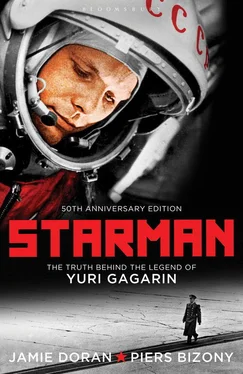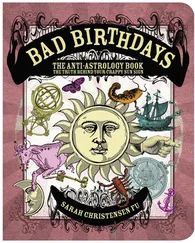Rubkin puts the investigation’s politics into broad perspective: ‘There were several sub-commissions investigating different areas. One of them dealt with the aircraft’s maintenance, another with pilot preparation, a third with the fuelling and tank installation, and a fourth examined all the medical matters. Finally there was another looking into any possibility of sabotage, or a revenge plot. That last was very much the KGB’s responsibility at the time.’ The problem – as so often with a high-profile and politically sensitive investigation – was that the five sub-commission teams did not communicate with each other. ‘Since there were several major institutions responsible for all these various areas, and the KGB had its own departments, the sub-commissions’ documentation was never assembled as one coherent package for the main commission. The reason was that too many interested parties worked for institutions that might have been found responsible for the crash. Certain people, whether we like it or not, adjusted the facts to save their honour. I found a report from General Mikoyan, the famous man who designed the MiG in the first place, saying that he was completely dissatisfied with the way the investigation was carried out.’
Alexei Leonov and Sergei Belotserkovsky also remained thoroughly dissatisfied with the commission’s work. They thought the weather-balloon theory was completely wrong. Leonov thinks he knows exactly what happened that day. ‘Another plane passed very close to Gagarin’s and Serugin’s MiG in the clouds, coming within ten, fifteen, twenty metres. The vortex [backwash] from the other plane turned the MiG upside-down and caused the loss of control and the crash.’
Leonov’s theory about aerodynamic interference from another plane provides a credible explanation for the disaster, except that such an ordinary problem should have been survivable. If backwash was a factor on March 27, Serugin should have been able to stabilize the MiG without too much difficulty. Major-General Yuri Khulikov, a former Air Force Chief of Flight Security Services, points out that the MiG-15 had been intensively flight-tested under simulated backwash conditions. Given a reasonable altitude for safety, any averagely experienced pilot should have been able to regain control. In January 1996 Khulikov gave an interview to Moscow News , in which he focused rather harshly on ‘pilot error’ as an explanation for the crash. ‘Even if Gagarin and Serugin got into a vortex stream, the MiG should have been recoverable. Such a vortex doesn’t much affect the engine. I’d like to point out, this conclusion was reached after a very stringent series of tests… Gagarin wasn’t at all prepared for such conditions… You must understand what the name “Gagarin” meant in our country at that time. It was a symbol of the victory of socialism in space. It seems that the First Cosmonaut couldn’t be capable of making mistakes.’ [10] Julin, Alexander, ‘Gagarin & Serugin – The Last Flight’, Moscow News , No. 3, week of January 28–February 4, 1996.
But Khulikov has an axe to grind, since his loyalties lie with the original members of the 1968 investigating commission and those senior officers responsible for general air-traffic control at that time. Notably he forgot to mention that the MiG-15 and many other planes used in vortex recovery tests had never been fitted with drop-tanks because – and this is where the military logic goes round in circles – it was forbidden to fly drop-tanks in such extreme manoeuvres. Quite simply it never occurred to anyone to test MiG-15 training craft under the most severe flying conditions with the tanks attached, because it would have been much too dangerous, even for the most experienced test pilot.
Clearly a backwash hitting a MiG with drop-tanks (as flown by Gagarin and Serugin) would have been more of a hazard than Major-General Khulikov likes to admit.
Alexei Leonov goes much further, insisting that it was not just ordinary backwash from another MiG, but a powerful supersonic shockwave from a brand-new, high-performance fighter that slammed into Gagarin’s and Serugin’s plane like a solid brick wall.
Leonov was always firmly convinced that the two bangs he had heard after he landed his helicopter at Kerzatch were made by two entirely different phenomena. The MiG-15UTI was fast, but far from supersonic. The distant bangs may have sounded faint from where he was standing at the time, but he was sure they were caused by an explosion and an additional supersonic boom. Therefore another, and much faster, aircraft must have entered the same airspace at the wrong moment. But when Leonov tried to persuade his fellow investigators to explore this theory, ‘all my attempts were stopped by some invisible wall. I understand that a Deputy Chief Commander was appointed to the accident commission. He was also in charge of the traffic control for that region, and he could have been responsible [for events on March 27], but he didn’t pay attention to them in his report. It could have been problematic.’
Leonov was unhappy about such obstruction. He was sure that the supersonic boom had not been a figment of his imagination. Eyewitnesses on the ground, near the crash zone, contributed some powerful supporting evidence, which again was not included in the final report. ‘Apart from the fact that I heard the sounds myself, three local dwellers were questioned separately. All of them said they’d seen smoke and fire coming out of a plane’s tail. Then it went up into the clouds. So it was a reversed process. Gagarin fell down to earth, but this other plane went upwards at great speed.’ The witnesses were shown aircraft identification charts, and all of them immediately picked out the distinctive outline of a new Sukhoi SU-11 supersonic jet, which looked nothing like an old MiG-15. ‘We knew that SU-11s could be in that area, but they were supposed to fly above 10,000 metres,’ says Leonov.
The ‘smoke and fire’ coming from the mysterious plane’s rear end were sharply suggestive of an afterburner at full thrust. The SU-11 included an afterburner, which was a relatively new piece of technology: a supercharger wherein the jet exhaust was re-ignited for extra thrust, particularly when the plane was pushing towards supersonic speed and beyond. At full thrust the SU-11 could achieve nearly twice the speed of sound. The antiquated subsonic MiG-15 did not have an afterburner and its exhaust stream was not noticeably fiery.
The evidence for this mysterious second aircraft in the area was supported by one of the air-traffic controllers on duty that day, Vyacheslav Bykovsky, who told the commission that he had seen two other target blips on his radar screen, one of which was approaching from the east. Apparently that signal continued to register on his screen for at least two minutes after Gagarin had crashed. In fact, the timing of the crash was hard to define. Seismometers in Moscow registered a signal at 10.31 in the morning, consistent with an aircraft impact, but Bykovsky says, ‘To this day I don’t believe Gagarin fell at that time, because we lost contact with him on the radar at forty-one minutes past, not thirty-one.’ Then he contradicts himself, saying that the MiG’s chronometer was found among the wreckage, jammed at 10.31. ‘Who knows what all this means? There are so many possibilities. Maybe the people in Moscow recorded some other shock before the crash. I don’t know. I went to Star City a year after Gagarin’s death, and the tour guide said he died at 10.41. A year afterwards they said he died at 10.31. There’s a big difference.’
Immediately after the crash, Bykovsky and the other controllers in his station were placed under security, and their evidence at the time was carefully filtered. Today he says, ‘There were two other planes in the area. We knew about them. The generals on the commission gathered us all together and we explained to them what we’d seen, but we were segregated and we didn’t work again for more than a week. People were questioned about the other plane [the plane which may have interfered with Gagarin’s and Serugin’s flight] and many said they’d seen it.’
Читать дальше












